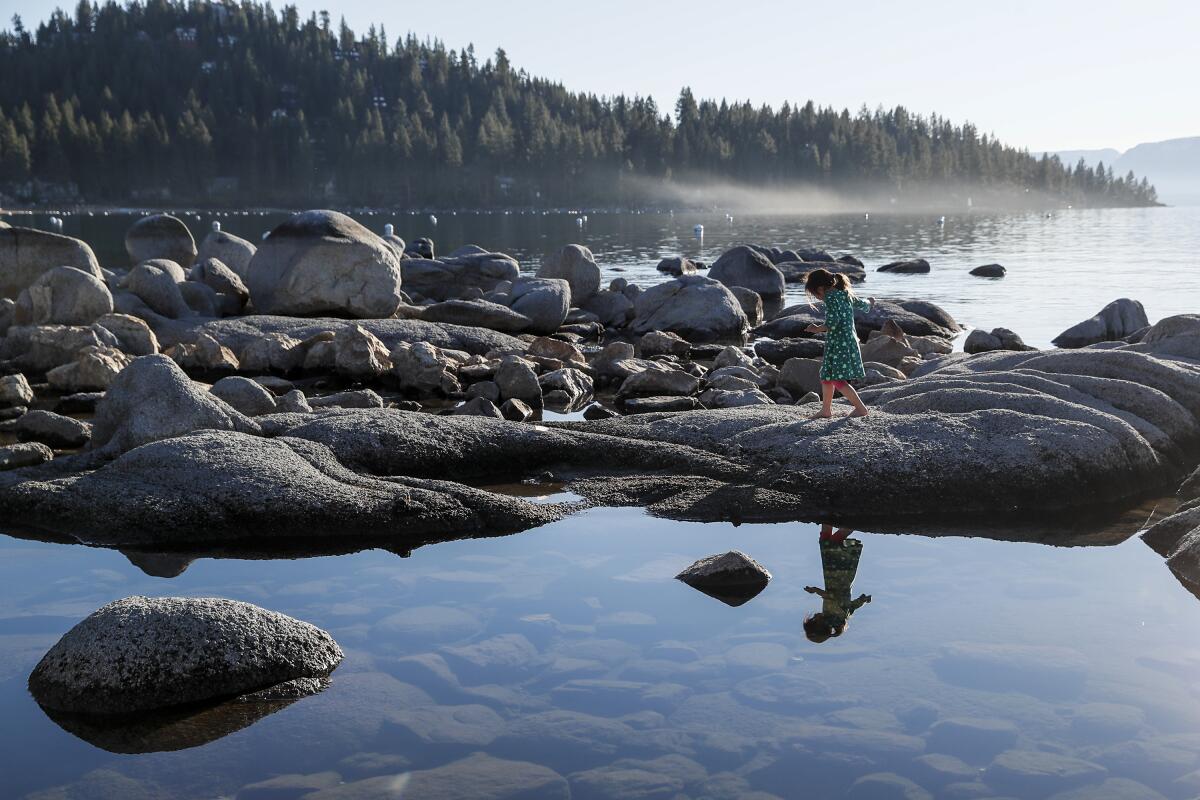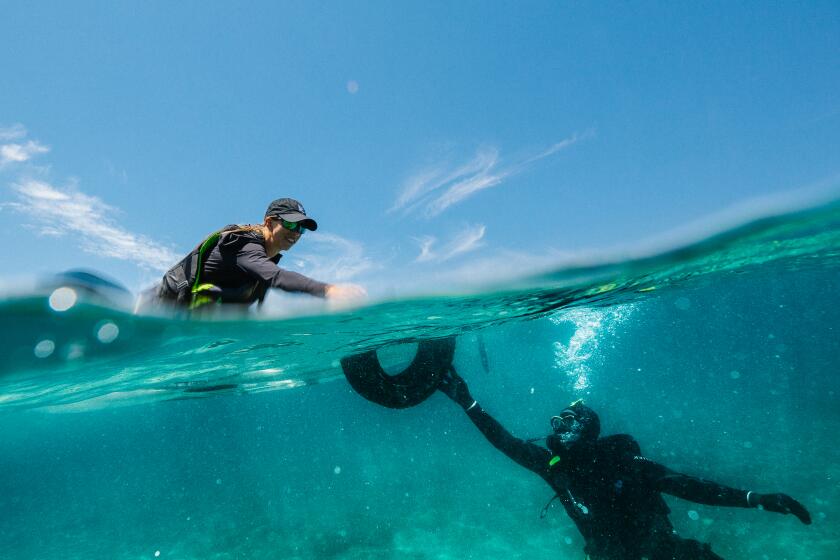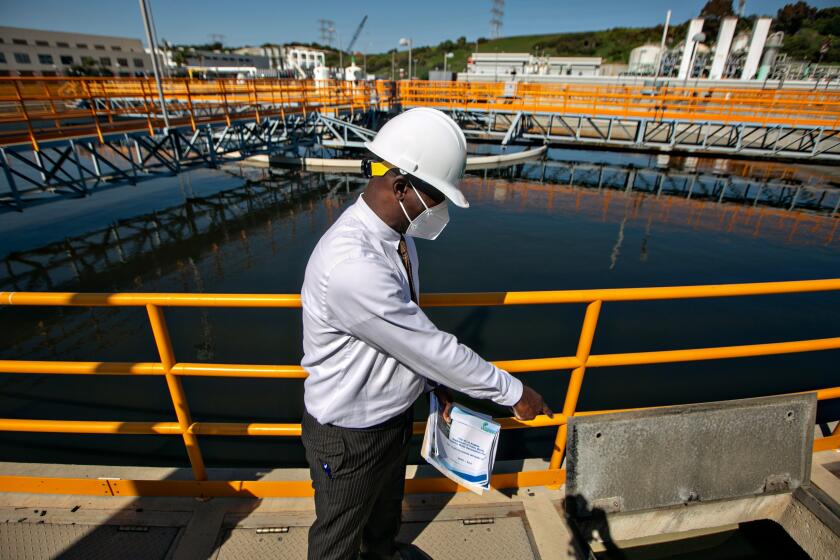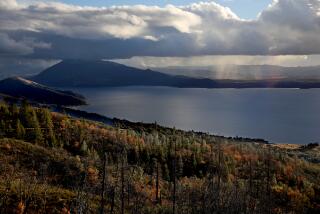Tiny nibbling creatures are making Lake Tahoe clearer than it’s been in decades

The once famously clear water of California’s Lake Tahoe appears to be on the rebound.
In late 2022, the lake was clear to a depth of 81 feet, almost 20 feet deeper than in 2021, according to a report released Monday by the Tahoe Environmental Research Center.
The primary cause for the clarity is an abundance of microscopic zooplankton that eat other tiny particles that cloud the lake, researchers said.
And the reason there are so many zooplankton is a sudden and unexpected drop in the population of shrimp that eat them, according to the report.
Lake Tahoe, known for its picturesque views, also has a garbage problem: A team of scuba divers this week collected more than 25,000 pounds of trash from its waters.
The plankton “provided a natural clean-up crew to help restore the lake’s famous blue waters,” the report said. The last time the lake was this clear was in the 1980s.
Researchers have been studying the lake’s clarity for more than 50 years, and the technique remains charmingly low-tech. They lower a white disk the size of a dinner plate and record how much line has paid out when the plate disappears.
In 1968, that happened at 102 feet. Since then, the lake has gotten steadily more cloudy.
There are many causes, including water temperature and runoff of pollutants from land and the streams that feed into the lake. But after examining all of the possibilities, scientists concluded that “only the change in the zooplankton community could account for the magnitude of this year’s change.”
Scientists expect the populations of those zooplankton, specifically Daphnia and Bosmina, to continue growing in 2023. Their numbers will be so great the lake should get even cleaner, despite the expected runoff from this year’s record snowpack.
But the clean water is likely to be short-lived. The scientists didn’t say what caused the decline in Mysis shrimp, which eat the zooplankton, but they expect the shrimp to rebound.
“Future management actions should explicitly look at incorporating ways of controlling the Mysis population,” said Geoffrey Schladow, director of the UC Davis Tahoe Environmental Research Center.
Resistance to antibiotics could become the next pandemic unless action is taken, researchers say.
That’s in addition to road maintenance and erosion control aimed at keeping pollution out of the lake in the first place.
Officials in California and Nevada, which have long shorelines along Lake Tahoe and collect tax revenue from the many tourists who visit, hope to restore the water’s clarity to nearly 100 feet.
More to Read
Sign up for Essential California
The most important California stories and recommendations in your inbox every morning.
You may occasionally receive promotional content from the Los Angeles Times.













